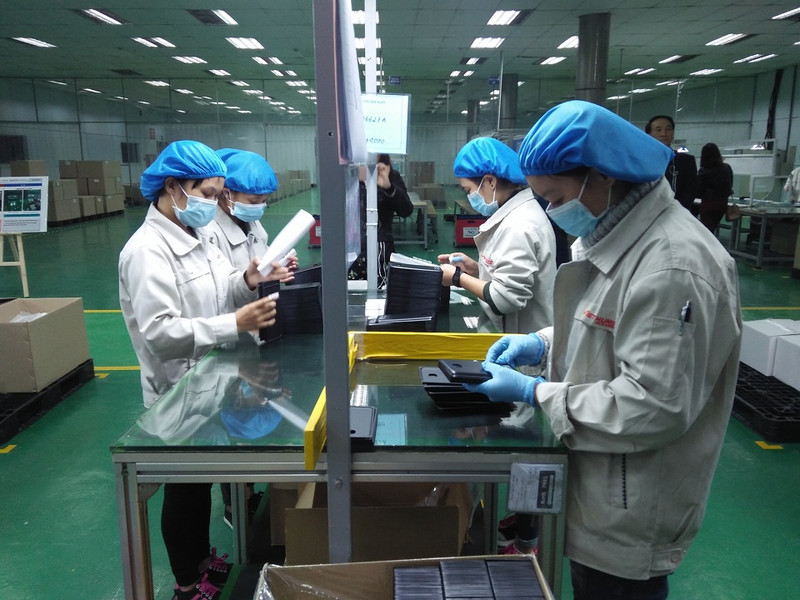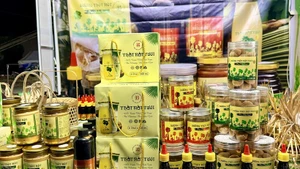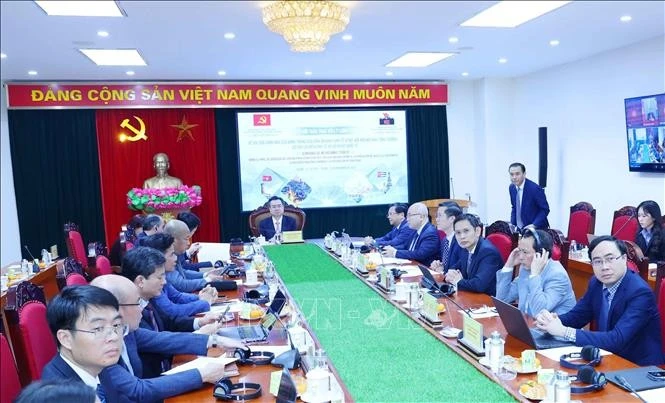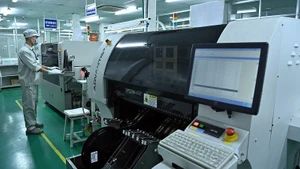After the economy is estimated to grow 8.02% for 2022, the government has asked authorised agencies to take drastic actions to continue fuelling economic growth with a focus on businesses’ confidence and industrial production, which is tending to go down amid the increasing risks facing the economy in 2023.
The government determined that it is necessary to closely monitor developments in the world situation, as well as developments in fiscal and monetary policies of the countries and regions that are Vietnam’s main trading and investment partners.
It is also a must to have a proactive plan to promptly respond to arising situations and to have regular updates on the situation in order to have a timely response in maintaining the stability and growth of the economy in 2023.
In addition, it is necessary to actively and flexibly manage monetary policy, stabilise exchange rates and interest rates, control prices and markets, ensure the supply of goods, and ensure major balances of the economy. There must be solutions to limit the hoarding of foreign currencies and the transfer of assets in VND into foreign currencies as well as to balance supply and demand and stabilise prices of essential items, especially during holidays such as Tet.
Production falling
Though it is estimated that Vietnam’s index for industrial production (IIP) will climb at a relatively high level of 7.8% year on year in 2022, a close look at the situation has revealed that the year-on-year IIP had been tending to increase, at 6.8% in Q1, 9.8% in Q2, and 10.9% in Q3, but dropped to only 3% in Q4, according to the General Statistics Office (GSO).
“The IIP for Q4 has been attributed to a drop in enterprises’ orders and an expansion in input costs as well as shortages of materials,” the GSO said. “Industrial production in Q4 is tending to slow down, with added value estimated to climb only 3.6% year on year, lower than that of 7.16% in Q1, 9.51% in Q2, and 11.06% in Q3.
The IIP has witnessed a year-on-year fall over the past three months. After reaching a peak of 15.6% in August, it started to decrease to 13% in September, 6.3% in October, and 5.3% in November before dropping to only 0.2% in December.
“In addition to achievements harvested, industrial production is tending to decrease and the situation is expected to continue in the coming time. In 2023, the economy will continue to be challenged by more difficulties, especially when it remains quite open to the world’s economy,” said GSO general director Nguyen Thi Huong.
The economy’s GDP was valued at 409 billion USD in 2022 when total export-import turnover hit 732.5 billion USD, which was 1.8 times higher than GDP.
“Meanwhile, the global economy may face a downturn and continued instability in economics, politics, military, and pandemics, which will continue to affect the Vietnamese economy,” Huong warned.
In 2022, the number of businesses with halted operations reached 73,800 - up 34.3% year on year. Furthermore, the number of those that have halted operations and are waiting for dissolution hit 50,800 (up 5.5%), while the number of those having completed dissolution procedures touched 18,600 (up 11.2%). On average, the economy saw about 11,900 enterprises withdraw from the market on a monthly basis.
Confidence bouncing back
In May 2021, Tran Hai Van, director of Red Lotus Trading JSC, halted the operation of her factory, which produces home appliances in Hanoi’s Dong Anh District, because of shortages of orders and an increase in input costs. The factory was opened in 2018 and is the second that Van has founded in the city.
Then, one year later, the first factory also faced difficulties and had to operate in moderation.
However, in October 2022, thanks to the company’s efforts in seeking orders and obtaining more loans, the two factories resumed operations and gradually returned to their full operations. This means 500 workers have had incomes.
“We hope difficulties will reduce in 2023 so that we can expand our outlets to the southern region,” Van said.
Red Lotus Trading JSC’s case is among the 16,300 enterprises throughout the country to have resumed operations in Q4 of 2022.
At last week’s cabinet meeting on Vietnam’s socioeconomic situation in 2022 and for 2023, Prime Minister Pham Minh Chinh stated that despite difficulties with a drop in industrial production, the economy is expected to continue bouncing back strongly in 2023 after its good performance in 2022.
“The confidence of enterprises and investors is bouncing back, facilitating the economy to achieving bigger growth, with more jobs to be created,” PM Chinh said. “In 2022, the number of newly-founded businesses was on the rise.”
In 2022, the number of newly-established enterprises hit 148,500, registering 69.17 billion USD and employing 981,300 new workers. These show a 27.1% rise in the number of enterprises, a 1.3% drop in capital, and a 14.9% rise in labourers.
“If the 137.94 billion USD in newly-registered capital from the 50,400 operational enterprises is included, the total registered capital supplemented into the economy last year reached 207.1 billion USD, up 15.2% over 2021,” the GSO said. “Furthermore, about 59.800 enterprises resumed operations in 2022 – up 38.8% year on year, raising the total number of businesses that are newly founded or resumed operations in the year to 208,300 – up 30.3% year on year. On average, each month saw 17,400 businesses which were newly established or resumed operations.”
Under a GSO survey on manufacturing and processing businesses in Q4 of 2022, 31.5% of respondents expect their performance in Q1 of 2023 to get better than in Q4 of 2022, and 37.3% expect business to become stable in Q1 of 2023 – of which Vietnamese private enterprises show the most optimism with 70.3% saying their performance in Q1 of 2023 will be better than Q4 of 2022. Such rates are 68.9% for state-owned enterprises and 65.3% for foreign-invested enterprises.
Offering more assistance
With a view to fuelling the economy and support enterprises and investors PM Chinh next week is expected to sign and enact a resolution on key tasks for implementation of the socioeconomic development plan and state budget estimates for 2023, as well as on continuing the deployment of measures to improve the domestic business climate and enhance national competitiveness in 2023.
The resolution, which embraces 11 groups of key solutions with 142 concrete tasks, aims to achieve the ultimate goals of securing an economic growth rate of at least 6.5% for 2023, with improvements in national economic competitiveness and in the local investment and business climate in favour of investors and enterprises.
The government will continue the implementation of tasks in a flexible and effective manner – aiming to boost economic growth and complete institutions for the socialist-oriented market economy, thus facilitating economic recovery and development based on stabilising the macro-economy and curbing inflation rate, as well as improving the economy’s resilience.
The government has requested ministries, municipal and provincial people’s committees, and other governmental agencies to comprehensively and effectively enforce their main tasks and solutions to enhance Vietnam’s business environment and national competitiveness in 2023.
The government ordered priority to be given to improving several indexes and indicators regarding construction permit issuance, asset registration, settlement of contract disputes, bankruptcy of enterprises, land administrative management quality, application of information technology, quality of vocational training, students’ skills, patent granting, fighting against corruption, online transactions, job opportunities in knowledge-intensive sectors, and a sustainable ecosystem.
“We pledge to create an open investment environment and complete the legal system for effective investment, in the spirit of harmonising interests and sharing risks between the state, people and businesses,” PM Chinh stated.
According to PM Chinh, Vietnam will maintain socio-political and macro-economic stability; remove bottlenecks of the economy in terms of legal institutions, infrastructure and human resources; develop supply chains; reduce transaction costs, especially logistic and administrative costs; build a stable environment and policies; and exercise transparency and accountability.
Tran Hai Van of Red Lotus Trading JSC said that she expects the resolution will be materialised via specific measures and programmes by ministries, agencies, and localities.
“The economy is bouncing back, and we hope the solutions will continue to help enterprises like us to not only stay afloat but also weather all difficulties, now and ahead. This will help the economy ensure the government’s desired economic growth,” Van said.
















